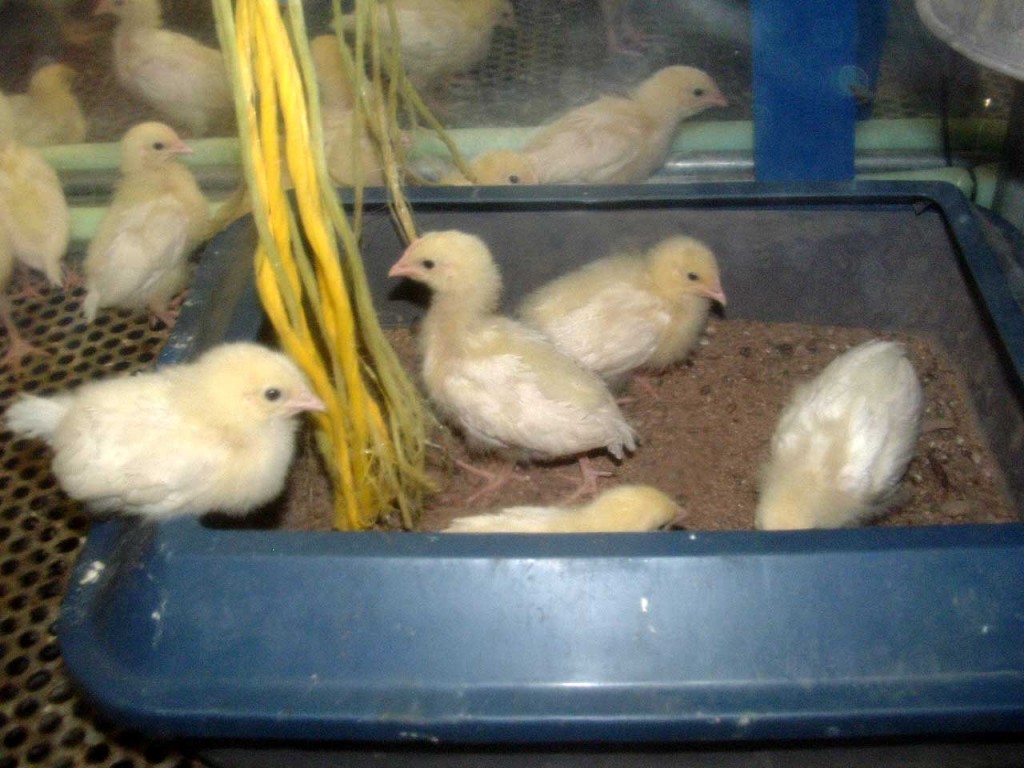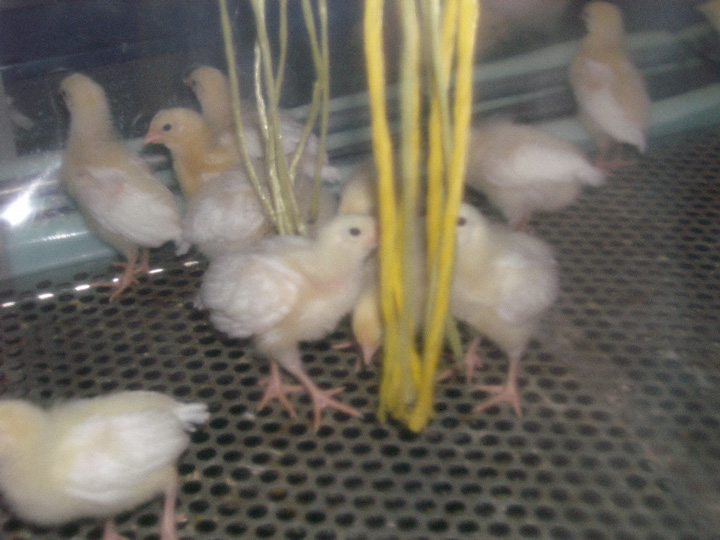Environmental Enrichment
Environmental enrichment

Chickens in an isolator with access to string bunches and a sand box
Poultry welfare and productivity can be improved by environmental enrichment which also decreases harmful behaviours, especially fear or feather pecking.
Chickens which are kept in both industrial poultry facilities and facilities for research purposes are typically maintained in a relatively bare environment optimised for disinfection rather than bird welfare. They are usually also handled intensively. These birds are therefore at risk of developing harmful behaviours including feather pecking. Remedial measures like beak trimming and reduced light intensity are often associated with welfare problems themselves. For example, improper beak trimming can cause chronic pain and keeping the birds under low light intensities not only impoverishes the visual environment but it can also result in malnutrition and in the development of eye abnormalities.
Enrichment strategies
Offering the chickens environmental enrichment in form of string bunches or sand boxes has been shown to reduce the incidence of feather pecking and therefore improves the welfare and performance of the animals. The string bunches provide some foraging and exploration, sustain lengthy interest, and reduce inter-bird pecking and feather damage.
Other enrichment strategies which have been reported to reduce aggression and improve the birds’ health and productivity are acoustic stimuli such as playing a radio; this is also one of the easiest ways of enriching the farmers’ environment. Another option – where applicable – is to give the chickens some lucerne hay which offers the chickens plenty of opportunity to pick and explore.

Chickens with access to string bunches
Further information
- Bilcik, B. and Keeling, L.J. (1999). British Poultry Science 40, 444-51.
- Blokhuis, H.J. and Arkes, J.G. (1984). Applied Animal Behaviour Science, 12, 145–157.
- Gentle, M. J. (1986). World’s Poultry Science Journal 42, 268-275.
- Jones, R.B. (2002). International Journal of Comparative Psychology, 15, 77-106.
- Vestergaard, K.S., Kruijt, J.P. and Hogan, J.A. (1993). Animal Behaviour 45, 1127–1140.
- Renz, K.G. and Walkden-Brown, S.W. (2007). Proceedings of the Australian Poultry Science Symposium 19, 41-44.

